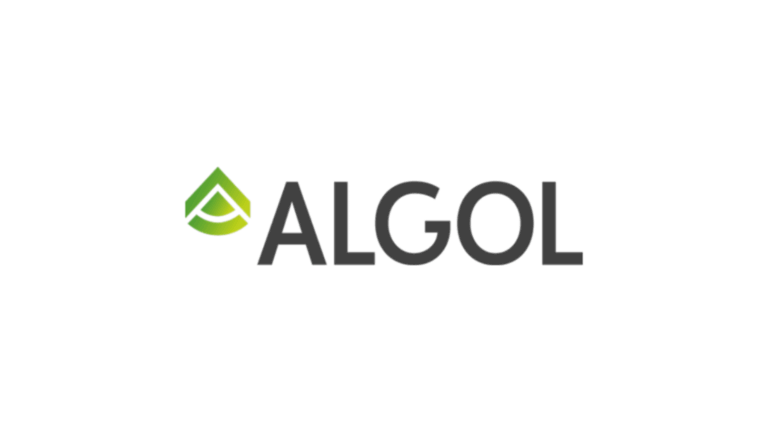
Having in recent years experienced a steep increase in the number of businesses engaging in “green communication” and eyeing that sometimes facts are not supporting what is being said, the Danish Consumer Ombudsman has now reiterated the path towards combatting greenwashing in Denmark.
Businesses that want to pursue an “eco-friendly” line of communication now has clear guidance – and since what you need to do in order to stay compliant is very explicitly explained, everyone that wants to bring a green message to the market will have to stay very alert.
Introduction
Behaving sustainably and having an ESG focus is the “new black” for many businesses – and is increasingly becoming a competitive feature in the communication with customers.
Many businesses are according to themselves “acting sustainably”, “reducing carbon footprint”, “being environmentally friendly” or are using similar statements giving the consumer audience the impression that you are dealing with a business thinking green.
Already in 2014, the Danish Consumer Ombudsman issued guidelines on the “use of environmental and ethical assertions”[1]. Now, in the age of (combatting) greenwashing, the Consumer Ombudsman has made the rules more accessible through the issue of a new “quick guide” to businesses about how to behave when engaging in environmentally focused marketing efforts.
Key principles
There are a few overriding principles which the Consumer Ombudsman puts specific emphasis on in the new guidance:
- As with other marketing statements, environmentally focused ones must be correct as well as both clearly phrased (so as to avoid consumers getting the wrong picture) and not omitting any important information.
- When speaking about actual circumstances you must be able to evidence what you say, and your statements must be supported by independent experts.
- You must apply the methodology of a full life-cycle analysis as support of general statements about being environmentally friendly.
However, the above does not “cut it” and below we will be diving a bit more deeply into some of the other key take-aways from the new guidance.
General statements about positive environmental or climate effect
Since you must be able to provide documentation for your statements, of course specific ones are easier to deal with than those of a general nature.
Against that background the obligation to provide documentation extends to general statements given without reference to a specific environmental advantage such as “green”, “climate or environmentally friendly” or “sustainable” as well as to situations where you use in your communication imagery with flowers, grass and other greenery as well as other images giving the impression of a climate friendly environment.
The starting point for the Consumer Ombudsman is that when consumers read a general “eco-friendly” statement about a product they are poised to believe that it has no adverse effects on the environment. This, however, is rarely true. If not substantiated such statements will in consequence be misleading, and the additional flipside of the coin is that the criteria for when you have evidenced that you are indeed eco-friendly are harsh in nature.
As a result, the recommendation from the Consumer Ombudsman is that general statements are substantiated by specific details about the positive environmental impact, adding that if the positive environmental impact is marginal in nature, you are not allowed to communicate at all that you are green.
Conversely, a business can only use general eco-friendly remarks if it can be evidenced that the product is absolute “top-of-class” environmentally speaking and impacts the environment significantly less comparing to other products in the market.
Not any evidence will do, as it must be in the form of a “true” cradle to grave life-cycle analysis that is backed by independent experts.
It becomes a bit easier if you are allowed to use an official label[2] for the product, as this enables you to use such terms as “less damaging to the environment”, “more eco-friendly”, etc.
If on the other hand you explain a general remark there is no need to refer to a life-cycle analysis, however the explanation must of course be true – and again backed by independent experts.
Further, the Consumer Ombudsman adds the following four requirements about how you phrase the positive impact: (i) it may not be marginal in nature, (ii) it may not be created through a process that in itself damages the environment[3], (iii) it may not be weighed out by climate damaging features, causing for instance products from particular polluting sectors not to be allowed to be branded as eco-friendly and (iv) it cannot be a usual feature of similar products.
Specific statements about positive environmental or climate effect
When telling consumers about specific eco-friendly features of your product, the information must of course again be true, and no material information may be left out.
In this context there are a few things to note for businesses.
First, you cannot promote this as a special feature if a product merely lives up to climate or environmental requirements.
Secondly, statements must be updated on an on-going basis if for instance technological advances or legislation causes the statement no longer to be true and fair.
Also, special regulations may apply to marketing of certain products or to specific consumer groups.
When you use the term “organic”
When using the term “organic” (in Danish: økologisk) for clothing or cosmetics it is a requirement that at least 95 per cent of the product content stems from certified organic production and that the remaining product content does not materially lower or neutralize the advantages of organic production.
Statements about carbon emissions
Statements to the world about a quest for carbon-neutrality or an effort to reduce emissions come ever so often nowadays. However, businesses should take note that in combatting greenwashing, the Consumer Ombudsman has now raised the bar for businesses that wants to depict themselves as for instance “climate neutral”, “creating zero emission” or “achieving a 30% emissions reduction”.
To this end, your marketing will be misleading if you say that you strive to reduce emissions, and this is not supported by (i) an actual plan for reducing emissions verified by an independent organization and (ii) green accounts detailing both current and future expected emissions.
If you say that you have reduced emissions, you must be able to provide evidence and you cannot ride on the back of historic emission reductions – numbers must be current. You can only say that you are carbon-neutral if calculations show that your emissions are zero. Use of climate compensation mechanisms must be detailed in clear and concise terms and must be verified by an independent party.
Talking about sustainability
It is easy to say that you are acting sustainably, and for that reason sustainability is one of the terms most commonly used in greenwashing exercises.
Taking the point of departure in the 1987 Brundtland report “Our Common Future”[4] , the Danish Consumer Ombudsman defines sustainability (in Danish: bæredygtighed) as “development that meets the needs of the present without compromising the ability of future generations to meet their own needs”.
Against that background, a number of criteria for using the term “sustainable” has now been set out, first and foremost that using this expression must be based on a life-cycle analysis showing that the business does not jeopardize coming generations’ ability to have their needs met – taking also into account health, social and ethical issues. This will obviously be a particularly strenuous task for businesses.
While going to market with a statement that a business “is sustainable” thus will be difficult, you can promote that you are striving to be sustainable or talk about specific sustainable actions taken.
A strive towards sustainability, including statements about objectives or visions, must be set out in a specific plan that shows how the business or product is gradually improved causing a measurable improvement over time. The plan must be verified by an independent organ and must have been or is immediately ready to be sanctioned.
If you talk about specific actions taken to become more sustainable you must describe what you are doing, and the actions must of course promote sustainability.
“Green” communication
Pictures speak louder than words, and the Consumer Ombudsman has also gone into the area of symbolic green communication, for instance when you use pictures, symbols, drawings, colors, etc. or otherwise green slogans, mottos, visions or similar to show that you are not a threat to the environment.
Using such imagery gives consumers the impression of dealing with a sustainable supplier, and this will be misleading unless you are able to offer evidence in support of such perception[5] [6].
In general terms you cannot promote yourself greener than what you are: also known as greenwashing
Risks
Since the Consumer Ombudsman deals with cases also on the basis of complaints, going forward consumer activism from impact organizations might work to drive up the number of cases where businesses are accused of and investigated for greenwashing.
The legal authority for the anti-greenwashing guidance is the Danish Marketing Practices Act, with the Consumer Ombudsman interpreting some of the general rules in said legislation in a green context.
Violations of the Danish Marketing Practices Act are punishable by fines, and the Consumer Ombudsman publishes its decisions.
Key take-aways
We have summarized the key take-aways for communication about being a friend of the climate as follows:
- If you talk the talk, you need to walk the walk. The requirements for evidenced your green commitment are quite tough to meet.
- Try to avoid general eco-friendly notions, but be honest about what you are doing, why and what you want to achieve. If you use general statements, you have quite a strenuous documentation exercise to complete.
- You can only rely on up-to-date data and ready-to-go plans about what you have or want to achieve on the climate front.
- You have to watch not only the spoken word or the words you put on paper, as using imagery to create an illusion of being a friend of the climate can also be seen to mislead consumers.
Magnusson
Magnusson’s advanced commercial regulatory team regularly advises on climate and ESG related issues.
If you have questions on how to operate your business in Denmark when it comes these issues, please do not hesitate to get in touch.
Contact

Tom Stener Froberg
Partner / Head of Employment
Employment, Commercial, Corporate and M&A, EU and Competition, Public procurement, Transport
Send me an email +45 82 51 51 00 +45 40 43 18 40









